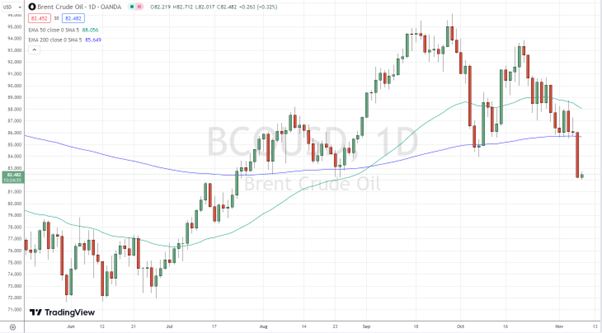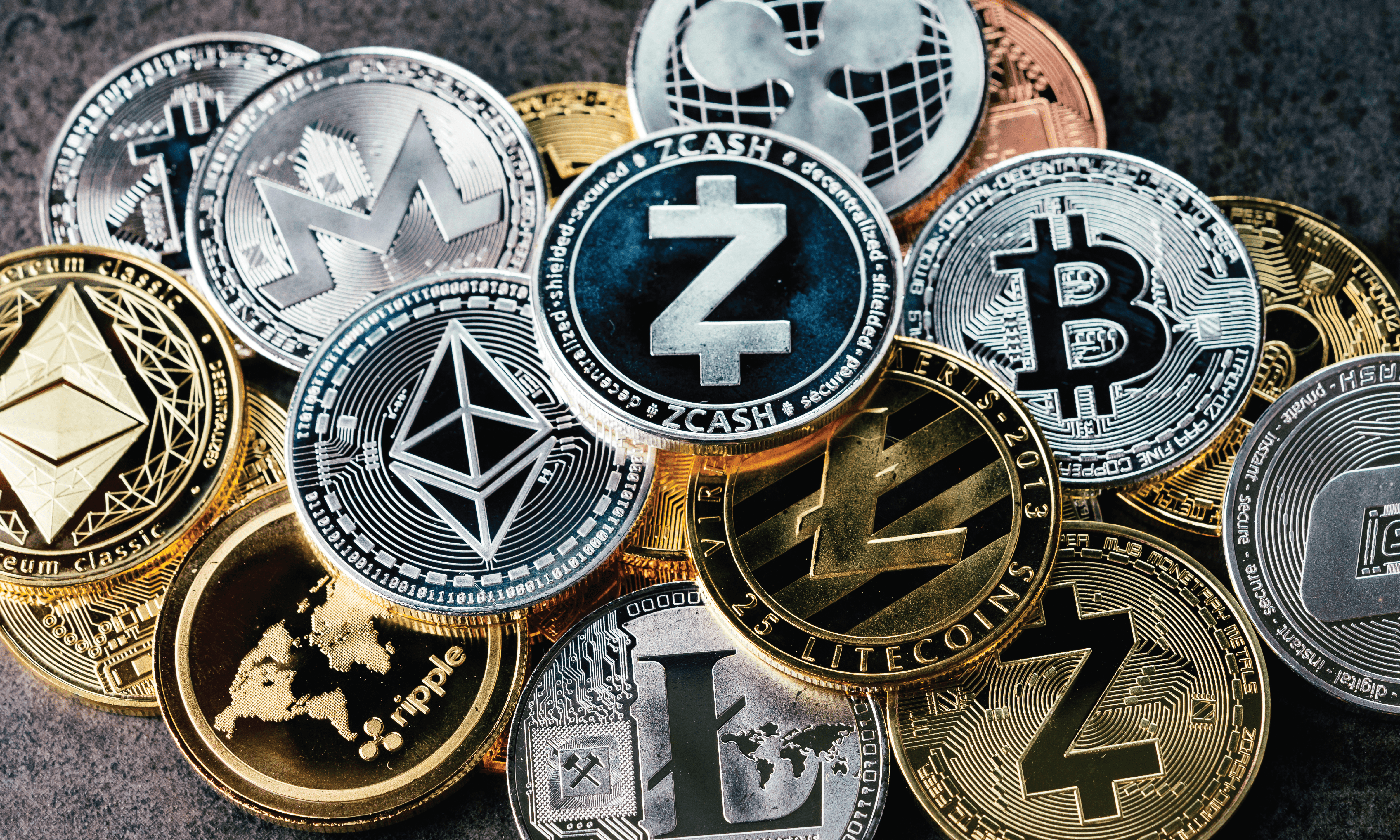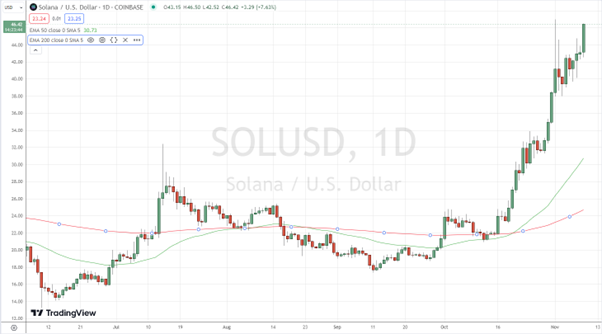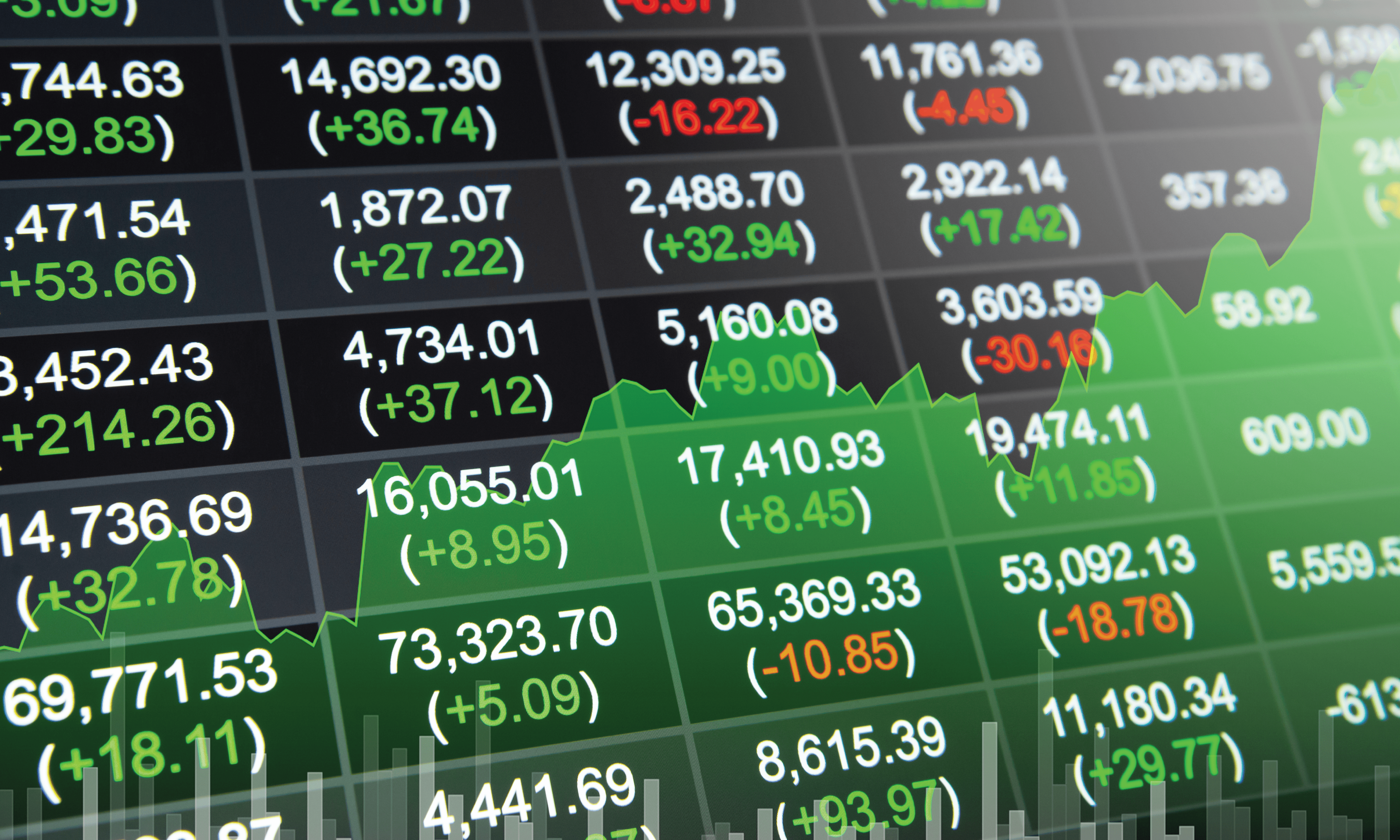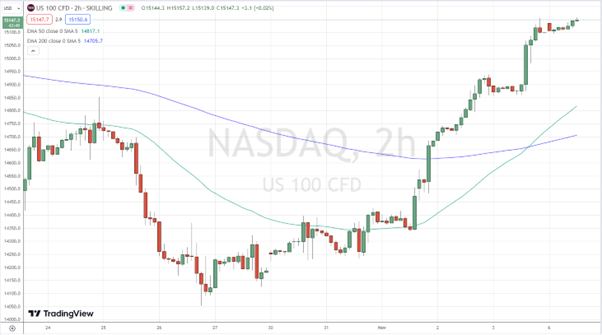Technology and commodities stocks saw outsized gains, with Amazon, Apple, AMD, Nvidia, Intel, and SOX, the Philadelphia semiconductor ETF gaining between 2%-3%, and Tesla gaining 6%, while mining stocks Alcoa, BHP, RIO, Glencore, Vale, Mos, and NEM added over 3% profits.
Equity investors cheered the disinflationary trend which could prompt the Fed to end its interest rate-hiking cycle, sending growth-sensitive Nasdaq Composite higher by 2.4%, while the S&P 500 climbed 1.9%, and the Dow Jones gained nearly 500 points, or 1.4%.
Technology and commodities stocks saw outsized gains, with Amazon, Apple, AMD, Nvidia, Intel, and SOX, the Philadelphia semiconductor ETF gaining between 2%-3%, and Tesla gaining 6%, while mining stocks Alcoa, BHP, RIO, Glencore, Vale, Mos, and NEM added over 3% profits.
Equity investors cheered the disinflationary trend which could prompt the Fed to end its interest rate-hiking cycle, sending growth-sensitive Nasdaq Composite higher by 2.4%, while the S&P 500 climbed 1.9%, and the Dow Jones gained nearly 500 points, or 1.4%.
Technology and commodities stocks saw outsized gains, with Amazon, Apple, AMD, Nvidia, Intel, and SOX, the Philadelphia semiconductor ETF gaining between 2%-3%, and Tesla gaining 6%, while mining stocks Alcoa, BHP, RIO, Glencore, Vale, Mos, and NEM added over 3% profits.
With the dollar on the back foot, the Euro rallied up to a 3-month high of $1.0880, Pound Sterling rose to $1.25, the Japanese Yen bounced to ¥150.40, with the antipodean currencies Aud and Nzd advanced to $0.65 and $0.6050 respectively.
Equity investors cheered the disinflationary trend which could prompt the Fed to end its interest rate-hiking cycle, sending growth-sensitive Nasdaq Composite higher by 2.4%, while the S&P 500 climbed 1.9%, and the Dow Jones gained nearly 500 points, or 1.4%.
Technology and commodities stocks saw outsized gains, with Amazon, Apple, AMD, Nvidia, Intel, and SOX, the Philadelphia semiconductor ETF gaining between 2%-3%, and Tesla gaining 6%, while mining stocks Alcoa, BHP, RIO, Glencore, Vale, Mos, and NEM added over 3% profits.
With the dollar on the back foot, the Euro rallied up to a 3-month high of $1.0880, Pound Sterling rose to $1.25, the Japanese Yen bounced to ¥150.40, with the antipodean currencies Aud and Nzd advanced to $0.65 and $0.6050 respectively.
Equity investors cheered the disinflationary trend which could prompt the Fed to end its interest rate-hiking cycle, sending growth-sensitive Nasdaq Composite higher by 2.4%, while the S&P 500 climbed 1.9%, and the Dow Jones gained nearly 500 points, or 1.4%.
Technology and commodities stocks saw outsized gains, with Amazon, Apple, AMD, Nvidia, Intel, and SOX, the Philadelphia semiconductor ETF gaining between 2%-3%, and Tesla gaining 6%, while mining stocks Alcoa, BHP, RIO, Glencore, Vale, Mos, and NEM added over 3% profits.
The DXY-U.S. dollar index, which tracks the value of the greenback against six major peers, fell almost 1.5% toward the 104 level, the lowest since early September, following the selloff in the U.S. Treasury yields, with the 10-y yields falling as low as 4.43%.
With the dollar on the back foot, the Euro rallied up to a 3-month high of $1.0880, Pound Sterling rose to $1.25, the Japanese Yen bounced to ¥150.40, with the antipodean currencies Aud and Nzd advanced to $0.65 and $0.6050 respectively.
Equity investors cheered the disinflationary trend which could prompt the Fed to end its interest rate-hiking cycle, sending growth-sensitive Nasdaq Composite higher by 2.4%, while the S&P 500 climbed 1.9%, and the Dow Jones gained nearly 500 points, or 1.4%.
Technology and commodities stocks saw outsized gains, with Amazon, Apple, AMD, Nvidia, Intel, and SOX, the Philadelphia semiconductor ETF gaining between 2%-3%, and Tesla gaining 6%, while mining stocks Alcoa, BHP, RIO, Glencore, Vale, Mos, and NEM added over 3% profits.
The DXY-U.S. dollar index, which tracks the value of the greenback against six major peers, fell almost 1.5% toward the 104 level, the lowest since early September, following the selloff in the U.S. Treasury yields, with the 10-y yields falling as low as 4.43%.
With the dollar on the back foot, the Euro rallied up to a 3-month high of $1.0880, Pound Sterling rose to $1.25, the Japanese Yen bounced to ¥150.40, with the antipodean currencies Aud and Nzd advanced to $0.65 and $0.6050 respectively.
Equity investors cheered the disinflationary trend which could prompt the Fed to end its interest rate-hiking cycle, sending growth-sensitive Nasdaq Composite higher by 2.4%, while the S&P 500 climbed 1.9%, and the Dow Jones gained nearly 500 points, or 1.4%.
Technology and commodities stocks saw outsized gains, with Amazon, Apple, AMD, Nvidia, Intel, and SOX, the Philadelphia semiconductor ETF gaining between 2%-3%, and Tesla gaining 6%, while mining stocks Alcoa, BHP, RIO, Glencore, Vale, Mos, and NEM added over 3% profits.
Both readings were below Wall Street estimates of an annual rise of 3.3% and 4.1% respectively, triggering a selloff on the U.S. dollar and the Treasury yields, and sparking a major rally across the financial board.
The DXY-U.S. dollar index, which tracks the value of the greenback against six major peers, fell almost 1.5% toward the 104 level, the lowest since early September, following the selloff in the U.S. Treasury yields, with the 10-y yields falling as low as 4.43%.
With the dollar on the back foot, the Euro rallied up to a 3-month high of $1.0880, Pound Sterling rose to $1.25, the Japanese Yen bounced to ¥150.40, with the antipodean currencies Aud and Nzd advanced to $0.65 and $0.6050 respectively.
Equity investors cheered the disinflationary trend which could prompt the Fed to end its interest rate-hiking cycle, sending growth-sensitive Nasdaq Composite higher by 2.4%, while the S&P 500 climbed 1.9%, and the Dow Jones gained nearly 500 points, or 1.4%.
Technology and commodities stocks saw outsized gains, with Amazon, Apple, AMD, Nvidia, Intel, and SOX, the Philadelphia semiconductor ETF gaining between 2%-3%, and Tesla gaining 6%, while mining stocks Alcoa, BHP, RIO, Glencore, Vale, Mos, and NEM added over 3% profits.
Both readings were below Wall Street estimates of an annual rise of 3.3% and 4.1% respectively, triggering a selloff on the U.S. dollar and the Treasury yields, and sparking a major rally across the financial board.
The DXY-U.S. dollar index, which tracks the value of the greenback against six major peers, fell almost 1.5% toward the 104 level, the lowest since early September, following the selloff in the U.S. Treasury yields, with the 10-y yields falling as low as 4.43%.
With the dollar on the back foot, the Euro rallied up to a 3-month high of $1.0880, Pound Sterling rose to $1.25, the Japanese Yen bounced to ¥150.40, with the antipodean currencies Aud and Nzd advanced to $0.65 and $0.6050 respectively.
Equity investors cheered the disinflationary trend which could prompt the Fed to end its interest rate-hiking cycle, sending growth-sensitive Nasdaq Composite higher by 2.4%, while the S&P 500 climbed 1.9%, and the Dow Jones gained nearly 500 points, or 1.4%.
Technology and commodities stocks saw outsized gains, with Amazon, Apple, AMD, Nvidia, Intel, and SOX, the Philadelphia semiconductor ETF gaining between 2%-3%, and Tesla gaining 6%, while mining stocks Alcoa, BHP, RIO, Glencore, Vale, Mos, and NEM added over 3% profits.
Falling dollar and bond yields sparked a rally across the board:
Both readings were below Wall Street estimates of an annual rise of 3.3% and 4.1% respectively, triggering a selloff on the U.S. dollar and the Treasury yields, and sparking a major rally across the financial board.
The DXY-U.S. dollar index, which tracks the value of the greenback against six major peers, fell almost 1.5% toward the 104 level, the lowest since early September, following the selloff in the U.S. Treasury yields, with the 10-y yields falling as low as 4.43%.
With the dollar on the back foot, the Euro rallied up to a 3-month high of $1.0880, Pound Sterling rose to $1.25, the Japanese Yen bounced to ¥150.40, with the antipodean currencies Aud and Nzd advanced to $0.65 and $0.6050 respectively.
Equity investors cheered the disinflationary trend which could prompt the Fed to end its interest rate-hiking cycle, sending growth-sensitive Nasdaq Composite higher by 2.4%, while the S&P 500 climbed 1.9%, and the Dow Jones gained nearly 500 points, or 1.4%.
Technology and commodities stocks saw outsized gains, with Amazon, Apple, AMD, Nvidia, Intel, and SOX, the Philadelphia semiconductor ETF gaining between 2%-3%, and Tesla gaining 6%, while mining stocks Alcoa, BHP, RIO, Glencore, Vale, Mos, and NEM added over 3% profits.
Falling dollar and bond yields sparked a rally across the board:
Both readings were below Wall Street estimates of an annual rise of 3.3% and 4.1% respectively, triggering a selloff on the U.S. dollar and the Treasury yields, and sparking a major rally across the financial board.
The DXY-U.S. dollar index, which tracks the value of the greenback against six major peers, fell almost 1.5% toward the 104 level, the lowest since early September, following the selloff in the U.S. Treasury yields, with the 10-y yields falling as low as 4.43%.
With the dollar on the back foot, the Euro rallied up to a 3-month high of $1.0880, Pound Sterling rose to $1.25, the Japanese Yen bounced to ¥150.40, with the antipodean currencies Aud and Nzd advanced to $0.65 and $0.6050 respectively.
Equity investors cheered the disinflationary trend which could prompt the Fed to end its interest rate-hiking cycle, sending growth-sensitive Nasdaq Composite higher by 2.4%, while the S&P 500 climbed 1.9%, and the Dow Jones gained nearly 500 points, or 1.4%.
Technology and commodities stocks saw outsized gains, with Amazon, Apple, AMD, Nvidia, Intel, and SOX, the Philadelphia semiconductor ETF gaining between 2%-3%, and Tesla gaining 6%, while mining stocks Alcoa, BHP, RIO, Glencore, Vale, Mos, and NEM added over 3% profits.
The Fed, which held interest rates steady at their last two FOMC monetary policy meetings, is scheduled to hold its next two-day gathering on Dec. 12-13.
Falling dollar and bond yields sparked a rally across the board:
Both readings were below Wall Street estimates of an annual rise of 3.3% and 4.1% respectively, triggering a selloff on the U.S. dollar and the Treasury yields, and sparking a major rally across the financial board.
The DXY-U.S. dollar index, which tracks the value of the greenback against six major peers, fell almost 1.5% toward the 104 level, the lowest since early September, following the selloff in the U.S. Treasury yields, with the 10-y yields falling as low as 4.43%.
With the dollar on the back foot, the Euro rallied up to a 3-month high of $1.0880, Pound Sterling rose to $1.25, the Japanese Yen bounced to ¥150.40, with the antipodean currencies Aud and Nzd advanced to $0.65 and $0.6050 respectively.
Equity investors cheered the disinflationary trend which could prompt the Fed to end its interest rate-hiking cycle, sending growth-sensitive Nasdaq Composite higher by 2.4%, while the S&P 500 climbed 1.9%, and the Dow Jones gained nearly 500 points, or 1.4%.
Technology and commodities stocks saw outsized gains, with Amazon, Apple, AMD, Nvidia, Intel, and SOX, the Philadelphia semiconductor ETF gaining between 2%-3%, and Tesla gaining 6%, while mining stocks Alcoa, BHP, RIO, Glencore, Vale, Mos, and NEM added over 3% profits.
The Fed, which held interest rates steady at their last two FOMC monetary policy meetings, is scheduled to hold its next two-day gathering on Dec. 12-13.
Falling dollar and bond yields sparked a rally across the board:
Both readings were below Wall Street estimates of an annual rise of 3.3% and 4.1% respectively, triggering a selloff on the U.S. dollar and the Treasury yields, and sparking a major rally across the financial board.
The DXY-U.S. dollar index, which tracks the value of the greenback against six major peers, fell almost 1.5% toward the 104 level, the lowest since early September, following the selloff in the U.S. Treasury yields, with the 10-y yields falling as low as 4.43%.
With the dollar on the back foot, the Euro rallied up to a 3-month high of $1.0880, Pound Sterling rose to $1.25, the Japanese Yen bounced to ¥150.40, with the antipodean currencies Aud and Nzd advanced to $0.65 and $0.6050 respectively.
Equity investors cheered the disinflationary trend which could prompt the Fed to end its interest rate-hiking cycle, sending growth-sensitive Nasdaq Composite higher by 2.4%, while the S&P 500 climbed 1.9%, and the Dow Jones gained nearly 500 points, or 1.4%.
Technology and commodities stocks saw outsized gains, with Amazon, Apple, AMD, Nvidia, Intel, and SOX, the Philadelphia semiconductor ETF gaining between 2%-3%, and Tesla gaining 6%, while mining stocks Alcoa, BHP, RIO, Glencore, Vale, Mos, and NEM added over 3% profits.
Even though the annual level of inflation was the lowest in two years, however, it’s still well above the Federal Reserve’s 2% inflation target. Fed began its battle against persistent inflation in March 2022, increasing its key borrowing rate 11 times for a total of 5.25 percentage points.
The Fed, which held interest rates steady at their last two FOMC monetary policy meetings, is scheduled to hold its next two-day gathering on Dec. 12-13.
Falling dollar and bond yields sparked a rally across the board:
Both readings were below Wall Street estimates of an annual rise of 3.3% and 4.1% respectively, triggering a selloff on the U.S. dollar and the Treasury yields, and sparking a major rally across the financial board.
The DXY-U.S. dollar index, which tracks the value of the greenback against six major peers, fell almost 1.5% toward the 104 level, the lowest since early September, following the selloff in the U.S. Treasury yields, with the 10-y yields falling as low as 4.43%.
With the dollar on the back foot, the Euro rallied up to a 3-month high of $1.0880, Pound Sterling rose to $1.25, the Japanese Yen bounced to ¥150.40, with the antipodean currencies Aud and Nzd advanced to $0.65 and $0.6050 respectively.
Equity investors cheered the disinflationary trend which could prompt the Fed to end its interest rate-hiking cycle, sending growth-sensitive Nasdaq Composite higher by 2.4%, while the S&P 500 climbed 1.9%, and the Dow Jones gained nearly 500 points, or 1.4%.
Technology and commodities stocks saw outsized gains, with Amazon, Apple, AMD, Nvidia, Intel, and SOX, the Philadelphia semiconductor ETF gaining between 2%-3%, and Tesla gaining 6%, while mining stocks Alcoa, BHP, RIO, Glencore, Vale, Mos, and NEM added over 3% profits.
Even though the annual level of inflation was the lowest in two years, however, it’s still well above the Federal Reserve’s 2% inflation target. Fed began its battle against persistent inflation in March 2022, increasing its key borrowing rate 11 times for a total of 5.25 percentage points.
The Fed, which held interest rates steady at their last two FOMC monetary policy meetings, is scheduled to hold its next two-day gathering on Dec. 12-13.
Falling dollar and bond yields sparked a rally across the board:
Both readings were below Wall Street estimates of an annual rise of 3.3% and 4.1% respectively, triggering a selloff on the U.S. dollar and the Treasury yields, and sparking a major rally across the financial board.
The DXY-U.S. dollar index, which tracks the value of the greenback against six major peers, fell almost 1.5% toward the 104 level, the lowest since early September, following the selloff in the U.S. Treasury yields, with the 10-y yields falling as low as 4.43%.
With the dollar on the back foot, the Euro rallied up to a 3-month high of $1.0880, Pound Sterling rose to $1.25, the Japanese Yen bounced to ¥150.40, with the antipodean currencies Aud and Nzd advanced to $0.65 and $0.6050 respectively.
Equity investors cheered the disinflationary trend which could prompt the Fed to end its interest rate-hiking cycle, sending growth-sensitive Nasdaq Composite higher by 2.4%, while the S&P 500 climbed 1.9%, and the Dow Jones gained nearly 500 points, or 1.4%.
Technology and commodities stocks saw outsized gains, with Amazon, Apple, AMD, Nvidia, Intel, and SOX, the Philadelphia semiconductor ETF gaining between 2%-3%, and Tesla gaining 6%, while mining stocks Alcoa, BHP, RIO, Glencore, Vale, Mos, and NEM added over 3% profits.
The softer CPI-inflation data readings provided a hopeful sign that persistently high prices of commonly used goods and services are easing their pressure on the U.S. economy and giving a potential green light to the Federal Reserve to stop raising interest rates.
Even though the annual level of inflation was the lowest in two years, however, it’s still well above the Federal Reserve’s 2% inflation target. Fed began its battle against persistent inflation in March 2022, increasing its key borrowing rate 11 times for a total of 5.25 percentage points.
The Fed, which held interest rates steady at their last two FOMC monetary policy meetings, is scheduled to hold its next two-day gathering on Dec. 12-13.
Falling dollar and bond yields sparked a rally across the board:
Both readings were below Wall Street estimates of an annual rise of 3.3% and 4.1% respectively, triggering a selloff on the U.S. dollar and the Treasury yields, and sparking a major rally across the financial board.
The DXY-U.S. dollar index, which tracks the value of the greenback against six major peers, fell almost 1.5% toward the 104 level, the lowest since early September, following the selloff in the U.S. Treasury yields, with the 10-y yields falling as low as 4.43%.
With the dollar on the back foot, the Euro rallied up to a 3-month high of $1.0880, Pound Sterling rose to $1.25, the Japanese Yen bounced to ¥150.40, with the antipodean currencies Aud and Nzd advanced to $0.65 and $0.6050 respectively.
Equity investors cheered the disinflationary trend which could prompt the Fed to end its interest rate-hiking cycle, sending growth-sensitive Nasdaq Composite higher by 2.4%, while the S&P 500 climbed 1.9%, and the Dow Jones gained nearly 500 points, or 1.4%.
Technology and commodities stocks saw outsized gains, with Amazon, Apple, AMD, Nvidia, Intel, and SOX, the Philadelphia semiconductor ETF gaining between 2%-3%, and Tesla gaining 6%, while mining stocks Alcoa, BHP, RIO, Glencore, Vale, Mos, and NEM added over 3% profits.
The softer CPI-inflation data readings provided a hopeful sign that persistently high prices of commonly used goods and services are easing their pressure on the U.S. economy and giving a potential green light to the Federal Reserve to stop raising interest rates.
Even though the annual level of inflation was the lowest in two years, however, it’s still well above the Federal Reserve’s 2% inflation target. Fed began its battle against persistent inflation in March 2022, increasing its key borrowing rate 11 times for a total of 5.25 percentage points.
The Fed, which held interest rates steady at their last two FOMC monetary policy meetings, is scheduled to hold its next two-day gathering on Dec. 12-13.
Falling dollar and bond yields sparked a rally across the board:
Both readings were below Wall Street estimates of an annual rise of 3.3% and 4.1% respectively, triggering a selloff on the U.S. dollar and the Treasury yields, and sparking a major rally across the financial board.
The DXY-U.S. dollar index, which tracks the value of the greenback against six major peers, fell almost 1.5% toward the 104 level, the lowest since early September, following the selloff in the U.S. Treasury yields, with the 10-y yields falling as low as 4.43%.
With the dollar on the back foot, the Euro rallied up to a 3-month high of $1.0880, Pound Sterling rose to $1.25, the Japanese Yen bounced to ¥150.40, with the antipodean currencies Aud and Nzd advanced to $0.65 and $0.6050 respectively.
Equity investors cheered the disinflationary trend which could prompt the Fed to end its interest rate-hiking cycle, sending growth-sensitive Nasdaq Composite higher by 2.4%, while the S&P 500 climbed 1.9%, and the Dow Jones gained nearly 500 points, or 1.4%.
Technology and commodities stocks saw outsized gains, with Amazon, Apple, AMD, Nvidia, Intel, and SOX, the Philadelphia semiconductor ETF gaining between 2%-3%, and Tesla gaining 6%, while mining stocks Alcoa, BHP, RIO, Glencore, Vale, Mos, and NEM added over 3% profits.
U.S. CPI-inflation index as of October 2023
The softer CPI-inflation data readings provided a hopeful sign that persistently high prices of commonly used goods and services are easing their pressure on the U.S. economy and giving a potential green light to the Federal Reserve to stop raising interest rates.
Even though the annual level of inflation was the lowest in two years, however, it’s still well above the Federal Reserve’s 2% inflation target. Fed began its battle against persistent inflation in March 2022, increasing its key borrowing rate 11 times for a total of 5.25 percentage points.
The Fed, which held interest rates steady at their last two FOMC monetary policy meetings, is scheduled to hold its next two-day gathering on Dec. 12-13.
Falling dollar and bond yields sparked a rally across the board:
Both readings were below Wall Street estimates of an annual rise of 3.3% and 4.1% respectively, triggering a selloff on the U.S. dollar and the Treasury yields, and sparking a major rally across the financial board.
The DXY-U.S. dollar index, which tracks the value of the greenback against six major peers, fell almost 1.5% toward the 104 level, the lowest since early September, following the selloff in the U.S. Treasury yields, with the 10-y yields falling as low as 4.43%.
With the dollar on the back foot, the Euro rallied up to a 3-month high of $1.0880, Pound Sterling rose to $1.25, the Japanese Yen bounced to ¥150.40, with the antipodean currencies Aud and Nzd advanced to $0.65 and $0.6050 respectively.
Equity investors cheered the disinflationary trend which could prompt the Fed to end its interest rate-hiking cycle, sending growth-sensitive Nasdaq Composite higher by 2.4%, while the S&P 500 climbed 1.9%, and the Dow Jones gained nearly 500 points, or 1.4%.
Technology and commodities stocks saw outsized gains, with Amazon, Apple, AMD, Nvidia, Intel, and SOX, the Philadelphia semiconductor ETF gaining between 2%-3%, and Tesla gaining 6%, while mining stocks Alcoa, BHP, RIO, Glencore, Vale, Mos, and NEM added over 3% profits.

U.S. CPI-inflation index as of October 2023
The softer CPI-inflation data readings provided a hopeful sign that persistently high prices of commonly used goods and services are easing their pressure on the U.S. economy and giving a potential green light to the Federal Reserve to stop raising interest rates.
Even though the annual level of inflation was the lowest in two years, however, it’s still well above the Federal Reserve’s 2% inflation target. Fed began its battle against persistent inflation in March 2022, increasing its key borrowing rate 11 times for a total of 5.25 percentage points.
The Fed, which held interest rates steady at their last two FOMC monetary policy meetings, is scheduled to hold its next two-day gathering on Dec. 12-13.
Falling dollar and bond yields sparked a rally across the board:
Both readings were below Wall Street estimates of an annual rise of 3.3% and 4.1% respectively, triggering a selloff on the U.S. dollar and the Treasury yields, and sparking a major rally across the financial board.
The DXY-U.S. dollar index, which tracks the value of the greenback against six major peers, fell almost 1.5% toward the 104 level, the lowest since early September, following the selloff in the U.S. Treasury yields, with the 10-y yields falling as low as 4.43%.
With the dollar on the back foot, the Euro rallied up to a 3-month high of $1.0880, Pound Sterling rose to $1.25, the Japanese Yen bounced to ¥150.40, with the antipodean currencies Aud and Nzd advanced to $0.65 and $0.6050 respectively.
Equity investors cheered the disinflationary trend which could prompt the Fed to end its interest rate-hiking cycle, sending growth-sensitive Nasdaq Composite higher by 2.4%, while the S&P 500 climbed 1.9%, and the Dow Jones gained nearly 500 points, or 1.4%.
Technology and commodities stocks saw outsized gains, with Amazon, Apple, AMD, Nvidia, Intel, and SOX, the Philadelphia semiconductor ETF gaining between 2%-3%, and Tesla gaining 6%, while mining stocks Alcoa, BHP, RIO, Glencore, Vale, Mos, and NEM added over 3% profits.

U.S. CPI-inflation index as of October 2023
The softer CPI-inflation data readings provided a hopeful sign that persistently high prices of commonly used goods and services are easing their pressure on the U.S. economy and giving a potential green light to the Federal Reserve to stop raising interest rates.
Even though the annual level of inflation was the lowest in two years, however, it’s still well above the Federal Reserve’s 2% inflation target. Fed began its battle against persistent inflation in March 2022, increasing its key borrowing rate 11 times for a total of 5.25 percentage points.
The Fed, which held interest rates steady at their last two FOMC monetary policy meetings, is scheduled to hold its next two-day gathering on Dec. 12-13.
Falling dollar and bond yields sparked a rally across the board:
Both readings were below Wall Street estimates of an annual rise of 3.3% and 4.1% respectively, triggering a selloff on the U.S. dollar and the Treasury yields, and sparking a major rally across the financial board.
The DXY-U.S. dollar index, which tracks the value of the greenback against six major peers, fell almost 1.5% toward the 104 level, the lowest since early September, following the selloff in the U.S. Treasury yields, with the 10-y yields falling as low as 4.43%.
With the dollar on the back foot, the Euro rallied up to a 3-month high of $1.0880, Pound Sterling rose to $1.25, the Japanese Yen bounced to ¥150.40, with the antipodean currencies Aud and Nzd advanced to $0.65 and $0.6050 respectively.
Equity investors cheered the disinflationary trend which could prompt the Fed to end its interest rate-hiking cycle, sending growth-sensitive Nasdaq Composite higher by 2.4%, while the S&P 500 climbed 1.9%, and the Dow Jones gained nearly 500 points, or 1.4%.
Technology and commodities stocks saw outsized gains, with Amazon, Apple, AMD, Nvidia, Intel, and SOX, the Philadelphia semiconductor ETF gaining between 2%-3%, and Tesla gaining 6%, while mining stocks Alcoa, BHP, RIO, Glencore, Vale, Mos, and NEM added over 3% profits.
The U.S. Labor Department reported yesterday that the CPI-consumer price index rose by 3.2% in October on an annualized basis, decelerating from a rate of 3.7% in September, due in large part to a fall in gas prices (2.5% fall for the month), while the core CPI (which excludes volatile food and energy prices) rose 0.2% in the month and by 4% annually.

U.S. CPI-inflation index as of October 2023
The softer CPI-inflation data readings provided a hopeful sign that persistently high prices of commonly used goods and services are easing their pressure on the U.S. economy and giving a potential green light to the Federal Reserve to stop raising interest rates.
Even though the annual level of inflation was the lowest in two years, however, it’s still well above the Federal Reserve’s 2% inflation target. Fed began its battle against persistent inflation in March 2022, increasing its key borrowing rate 11 times for a total of 5.25 percentage points.
The Fed, which held interest rates steady at their last two FOMC monetary policy meetings, is scheduled to hold its next two-day gathering on Dec. 12-13.
Falling dollar and bond yields sparked a rally across the board:
Both readings were below Wall Street estimates of an annual rise of 3.3% and 4.1% respectively, triggering a selloff on the U.S. dollar and the Treasury yields, and sparking a major rally across the financial board.
The DXY-U.S. dollar index, which tracks the value of the greenback against six major peers, fell almost 1.5% toward the 104 level, the lowest since early September, following the selloff in the U.S. Treasury yields, with the 10-y yields falling as low as 4.43%.
With the dollar on the back foot, the Euro rallied up to a 3-month high of $1.0880, Pound Sterling rose to $1.25, the Japanese Yen bounced to ¥150.40, with the antipodean currencies Aud and Nzd advanced to $0.65 and $0.6050 respectively.
Equity investors cheered the disinflationary trend which could prompt the Fed to end its interest rate-hiking cycle, sending growth-sensitive Nasdaq Composite higher by 2.4%, while the S&P 500 climbed 1.9%, and the Dow Jones gained nearly 500 points, or 1.4%.
Technology and commodities stocks saw outsized gains, with Amazon, Apple, AMD, Nvidia, Intel, and SOX, the Philadelphia semiconductor ETF gaining between 2%-3%, and Tesla gaining 6%, while mining stocks Alcoa, BHP, RIO, Glencore, Vale, Mos, and NEM added over 3% profits.
The U.S. Labor Department reported yesterday that the CPI-consumer price index rose by 3.2% in October on an annualized basis, decelerating from a rate of 3.7% in September, due in large part to a fall in gas prices (2.5% fall for the month), while the core CPI (which excludes volatile food and energy prices) rose 0.2% in the month and by 4% annually.

U.S. CPI-inflation index as of October 2023
The softer CPI-inflation data readings provided a hopeful sign that persistently high prices of commonly used goods and services are easing their pressure on the U.S. economy and giving a potential green light to the Federal Reserve to stop raising interest rates.
Even though the annual level of inflation was the lowest in two years, however, it’s still well above the Federal Reserve’s 2% inflation target. Fed began its battle against persistent inflation in March 2022, increasing its key borrowing rate 11 times for a total of 5.25 percentage points.
The Fed, which held interest rates steady at their last two FOMC monetary policy meetings, is scheduled to hold its next two-day gathering on Dec. 12-13.
Falling dollar and bond yields sparked a rally across the board:
Both readings were below Wall Street estimates of an annual rise of 3.3% and 4.1% respectively, triggering a selloff on the U.S. dollar and the Treasury yields, and sparking a major rally across the financial board.
The DXY-U.S. dollar index, which tracks the value of the greenback against six major peers, fell almost 1.5% toward the 104 level, the lowest since early September, following the selloff in the U.S. Treasury yields, with the 10-y yields falling as low as 4.43%.
With the dollar on the back foot, the Euro rallied up to a 3-month high of $1.0880, Pound Sterling rose to $1.25, the Japanese Yen bounced to ¥150.40, with the antipodean currencies Aud and Nzd advanced to $0.65 and $0.6050 respectively.
Equity investors cheered the disinflationary trend which could prompt the Fed to end its interest rate-hiking cycle, sending growth-sensitive Nasdaq Composite higher by 2.4%, while the S&P 500 climbed 1.9%, and the Dow Jones gained nearly 500 points, or 1.4%.
Technology and commodities stocks saw outsized gains, with Amazon, Apple, AMD, Nvidia, Intel, and SOX, the Philadelphia semiconductor ETF gaining between 2%-3%, and Tesla gaining 6%, while mining stocks Alcoa, BHP, RIO, Glencore, Vale, Mos, and NEM added over 3% profits.
The cooler-than-expected U.S. CPI inflation reading on Tuesday sparked a massive rally across the global stock markets and the growth-sensitive currencies, as it has increased the hopes that the Federal Reserve will have less motivation to raise interest rates further.
The U.S. Labor Department reported yesterday that the CPI-consumer price index rose by 3.2% in October on an annualized basis, decelerating from a rate of 3.7% in September, due in large part to a fall in gas prices (2.5% fall for the month), while the core CPI (which excludes volatile food and energy prices) rose 0.2% in the month and by 4% annually.

U.S. CPI-inflation index as of October 2023
The softer CPI-inflation data readings provided a hopeful sign that persistently high prices of commonly used goods and services are easing their pressure on the U.S. economy and giving a potential green light to the Federal Reserve to stop raising interest rates.
Even though the annual level of inflation was the lowest in two years, however, it’s still well above the Federal Reserve’s 2% inflation target. Fed began its battle against persistent inflation in March 2022, increasing its key borrowing rate 11 times for a total of 5.25 percentage points.
The Fed, which held interest rates steady at their last two FOMC monetary policy meetings, is scheduled to hold its next two-day gathering on Dec. 12-13.
Falling dollar and bond yields sparked a rally across the board:
Both readings were below Wall Street estimates of an annual rise of 3.3% and 4.1% respectively, triggering a selloff on the U.S. dollar and the Treasury yields, and sparking a major rally across the financial board.
The DXY-U.S. dollar index, which tracks the value of the greenback against six major peers, fell almost 1.5% toward the 104 level, the lowest since early September, following the selloff in the U.S. Treasury yields, with the 10-y yields falling as low as 4.43%.
With the dollar on the back foot, the Euro rallied up to a 3-month high of $1.0880, Pound Sterling rose to $1.25, the Japanese Yen bounced to ¥150.40, with the antipodean currencies Aud and Nzd advanced to $0.65 and $0.6050 respectively.
Equity investors cheered the disinflationary trend which could prompt the Fed to end its interest rate-hiking cycle, sending growth-sensitive Nasdaq Composite higher by 2.4%, while the S&P 500 climbed 1.9%, and the Dow Jones gained nearly 500 points, or 1.4%.
Technology and commodities stocks saw outsized gains, with Amazon, Apple, AMD, Nvidia, Intel, and SOX, the Philadelphia semiconductor ETF gaining between 2%-3%, and Tesla gaining 6%, while mining stocks Alcoa, BHP, RIO, Glencore, Vale, Mos, and NEM added over 3% profits.
The cooler-than-expected U.S. CPI inflation reading on Tuesday sparked a massive rally across the global stock markets and the growth-sensitive currencies, as it has increased the hopes that the Federal Reserve will have less motivation to raise interest rates further.
The U.S. Labor Department reported yesterday that the CPI-consumer price index rose by 3.2% in October on an annualized basis, decelerating from a rate of 3.7% in September, due in large part to a fall in gas prices (2.5% fall for the month), while the core CPI (which excludes volatile food and energy prices) rose 0.2% in the month and by 4% annually.

U.S. CPI-inflation index as of October 2023
The softer CPI-inflation data readings provided a hopeful sign that persistently high prices of commonly used goods and services are easing their pressure on the U.S. economy and giving a potential green light to the Federal Reserve to stop raising interest rates.
Even though the annual level of inflation was the lowest in two years, however, it’s still well above the Federal Reserve’s 2% inflation target. Fed began its battle against persistent inflation in March 2022, increasing its key borrowing rate 11 times for a total of 5.25 percentage points.
The Fed, which held interest rates steady at their last two FOMC monetary policy meetings, is scheduled to hold its next two-day gathering on Dec. 12-13.
Falling dollar and bond yields sparked a rally across the board:
Both readings were below Wall Street estimates of an annual rise of 3.3% and 4.1% respectively, triggering a selloff on the U.S. dollar and the Treasury yields, and sparking a major rally across the financial board.
The DXY-U.S. dollar index, which tracks the value of the greenback against six major peers, fell almost 1.5% toward the 104 level, the lowest since early September, following the selloff in the U.S. Treasury yields, with the 10-y yields falling as low as 4.43%.
With the dollar on the back foot, the Euro rallied up to a 3-month high of $1.0880, Pound Sterling rose to $1.25, the Japanese Yen bounced to ¥150.40, with the antipodean currencies Aud and Nzd advanced to $0.65 and $0.6050 respectively.
Equity investors cheered the disinflationary trend which could prompt the Fed to end its interest rate-hiking cycle, sending growth-sensitive Nasdaq Composite higher by 2.4%, while the S&P 500 climbed 1.9%, and the Dow Jones gained nearly 500 points, or 1.4%.
Technology and commodities stocks saw outsized gains, with Amazon, Apple, AMD, Nvidia, Intel, and SOX, the Philadelphia semiconductor ETF gaining between 2%-3%, and Tesla gaining 6%, while mining stocks Alcoa, BHP, RIO, Glencore, Vale, Mos, and NEM added over 3% profits.





